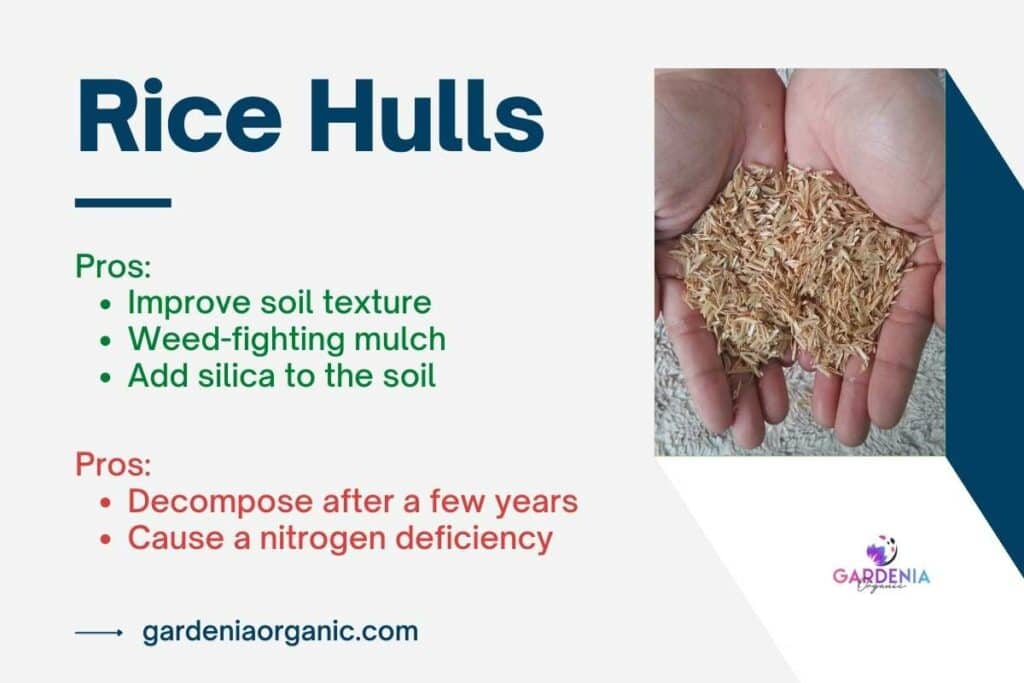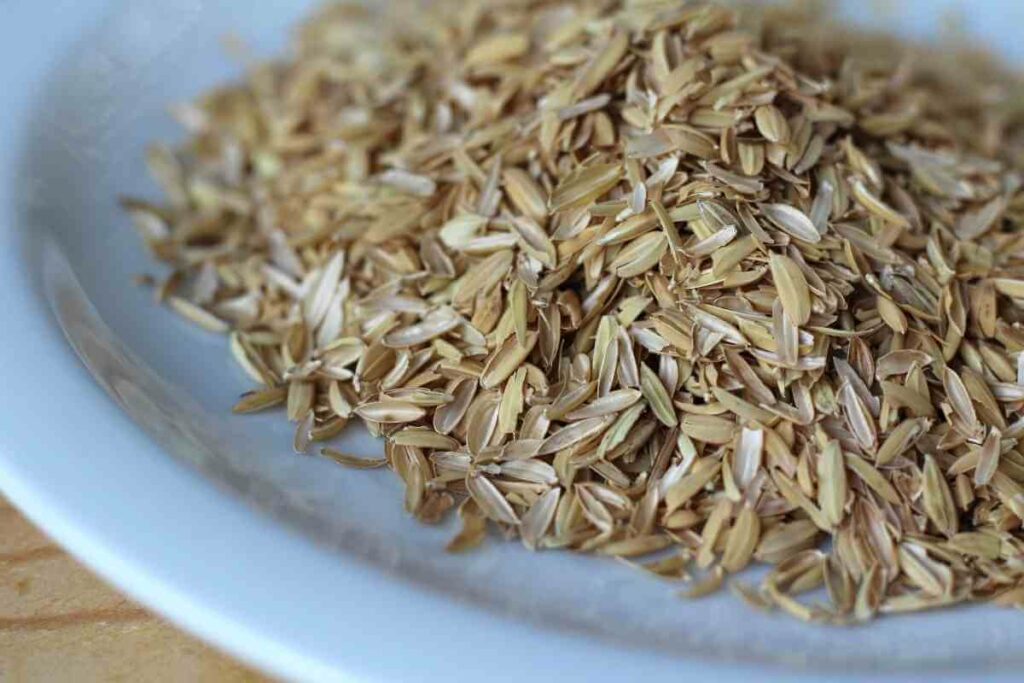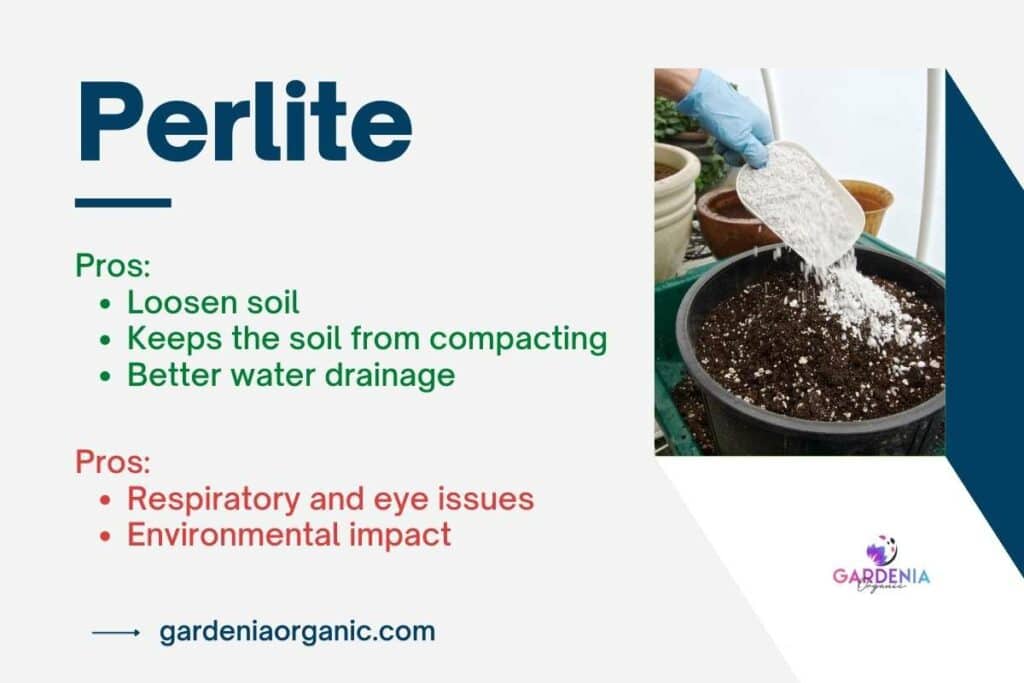Nobody is doubting the effectiveness of perlite.
Seasoned gardeners and novice gardeners often pick perlite as their first choice for a soil amendment, but did you know there are other options?
Specifically a more environmentally friendly option; rice hulls. Between rice hulls and perlite, which is better?
From an economic, environmental, and ease of use standpoint, rice hulls are better. Both rice hulls and perlite have their disadvantages, but by the end of this article, you’ll see why we can look past the small disadvantages rice hulls have.
Why Rice Hulls are good for plants
Rice hulls are the thin casings on grains of rice, kind of like the husk of corn.

After the rice has been harvested, the hulls are removed and often burned to remove the byproduct waste from the farm.
That is until someone had the brilliant idea to repurpose this byproduct into something useful.
Now after being removed, the hulls are sterilized by being parboiled at high heat to kill any diseases.
There are so many other reasons to choose rice hulls from now on.

Environmental Impact of using rice hull in your garden
We’ll go over it soon, but perlite is a non-renewable resource that needs to be mined from the earth with heavy equipment.
Taking a resource that can’t be renewed with machines that are adding carbon monoxide and nitrogen oxide into the air is quite the opposite of rice hulls.
Rice hulls are a completely renewable resource. As long as there is rice being grown, there will be rice hull byproducts to be used.
Good to Know: They don’t need to be mined, and harvesting the hulls doesn’t disrupt ecosystems like peat does.
What Rice Hulls Do For Your Plants
Rice hulls benefit your plants and gardens in so many ways.
They improve the texture of the soil, they add better drainage, they add silica, and they can be used as weed-fighting mulch!
If you are adding rice hulls to your gardens, spread a 2-inch layer over your soil and then mix the rice hulls into the top 6-12 inches.
Rice Hulls for plants
Horticulture Grade Rice Hulls, 3lb – 3 Gallon Bag Listed for organic use, suitable for greenhouses, vegetable gardens, raised bed gardens, potted plants, house plants, transplanting, soil mixing, crop aeration and general aggregate substitute.Lower cost than perlite and vermiculite with added benefits making it a perfect “GREEN” replacement.
Pros
- Lower cost
- Naturally breaks up hard soils
- Natural appearance
- Organic Product
- Increases water retention
Cons
- Can blow away in windy areas of the garden
- Needs replacing every few months
If you want to add rice hulls to your potted plants, add up to a 50 percent ratio of hulls to the soil.
When rice hulls are mixed in, it helps loosen the soil. This gives the roots more space to grow, improves the drainage in the soil, and leaves plenty of space for oxygen.
All of these are incredibly important for plant growth.
Rice hulls also add silica to the soil.
Silica is used to strengthen the cell walls in the plant, and it improves their immunity to diseases, drought, and heat.
Key Takeaway: Spraying silica is usually expensive and time-consuming, but adding rice hulls to soil is inexpensive and quick.
Disadvantages of using Rice Hulls for plants
There are two disadvantages to using rice hulls.
The first disadvantage is they begin to decompose after a few years, and as they decompose, the soil compresses again.

You can solve this by adding more rice hulls to the soil. Adding more rice hulls once a year will help keep your soil from compressing.
The other disadvantage to using rice hulls is they can cause a nitrogen deficiency.
Bacteria and microorganisms in the soil use nitrogen to break down any additives with high carbon content, such as rice hulls, leaving little to no nitrogen available to the plants.
Have You Noticed: If you notice the leave are turning a pale yellow color, and the growth has slowed, you might need to add a nitrogen-rich fertilizer.
How much do Rice hulls cost and are they easy to obtain?
Rice hulls aren’t as easy to find as perlite, but they can be found in specialty stores, some garden centers, and online.
Average cost per lbs: $1/lbs.
Rice hulls are bought in bulk, usually 50lbs bags, for around $40 to $60.
How much does Perlite cost and is it easy to obtain?
Perlite could be described as volcanic glass popcorn.
Let me explain. When a volcano erupts, and lava hits the water, it cools rapidly, but it also traps water particles inside the glass.

This glass is mined and is then heated to 1,600 degrees F.
When it reaches this temperature, the water particles vaporize and expand, and it causes the glass to “pop” as popcorn would.
When the glass “pops” it grows to over 10 times the size it was before.
The results are an extremely lightweight material with microscopic air compartments.
What Perlite Do For Your Plants?
Perlite helps loosen soil, keeps the soil from compacting, and helps with water retention and water drainage.
Hold on, that sounds counterproductive; it holds water and helps drain water? It’s not, and here’s why.
The perlite is going to add bulk to your soil so it can’t compact. The space the perlite is providing will let the water drain through the soil.
Promotes Healthy Roots and Great for Soil. Harris Horticultural Grade Perlite is ORGANIC and helps soil to retain moisture and nutrients while preventing root compaction allowing your plants to grow like never before.
Pros
- Aerates Soil
- Improves Drainage
- Prevents Compaction
- Promotes Moisture Retention
- Promotes Root Growth
Cons
- Looks visually untidy
- Impact on the environment
- An 8-quart bag does not go far
- Costly
If the soil is compacted, that water has no room to drain and will sit in the soil until it can finally work its way through the pot. This is what leads to root rot.
And those microscopic air pockets?
They trap and hold water molecules as the water travels through the soil. The pockets aren’t large enough to hold lots of water, only a little bit.
As the soil dries out, it pulls the moisture from the perlite, where your plants can access it.
If you don’t want to buy premade soil mixes, you can make your own. The ideal ratio when making your own blend for container plants is one part loam, one part peat, and part perlite. This gives the perfect amount of structure, drainage, water retention, and helps keep the soil from compacting.
Perlite is also great for propagating!
Take a Ziploc bag and fill it with moistened perlite. When you have a cutting you want to root, place the end into the perlite up to a node.
Fill the bag with air and seal the bag. Keep it out of direct sunlight, and check it after three weeks.
Your cutting should have rooted and you can plant this cutting.
What are the disadvantages of using Perlite for plants?

Perlite has a few disadvantages:
The first disadvantage is how lightweight it is. While it is great for the soil, it can be blown away by the wind, or washed away in the rain. It is so lightweight that it floats in water.
Perlite can also cause respiratory and eye issues. When working with perlite you should always wear goggles and a mask or the dust can irritate your eyes or lungs.
The biggest disadvantage to using perlite is its environmental impact. Perlite is a nonrenewable source. We can’t manufacture more, we can only mine what is available.
Looks unsightly, like styrofoam balls.
Costly, an 8-quart bag does not go far.
The mining and processing of perlite are also disastrous for the environment.

The gases given off by the machines required to mine the perlite, and the amount of power needed to heat the perlite to 1600 degrees F are not the least bit environmentally friendly.
Cost and Availability of Perlite for gardeners
Average cost per lbs: $5/lbs.
Perlite can easily be found in stores and online. It is sold in much smaller bags, and you can buy 2lbs for about $10.
However, you’ll need more than you think. I purchased an 8-quart bag when i first started gardening and didn’t know better and it didn’t go very far.
Quick fire FAQ’s about Rice Hulls vs Perlite
Can rice hulls and perlite be used together in soil mixes?
Yes, you could use rice hulls and perlite together in soil mixes. They have complementary properties that can improve soil structure, drainage, aeration, and nutrient availability. Rice hulls can help improve soil structure and provide nutrients to plants, while perlite can improve drainage and aeration.
How do rice hulls and perlite affect soil pH?
Rice hulls and perlite can affect soil pH differently. Rice hulls are slightly acidic, so adding them to soil mixes can lower the pH of the soil. Perlite, on the other hand, is pH neutral and does not affect soil pH.
Can rice hulls be used for succulents?
Yes, rice hulls can be used for succulents. Rice hulls have good water retention properties and can improve soil structure, which can be beneficial for succulent growth. They can also provide nutrients to the soil as they decompose over time.
Can rice hulls or Perlite be used around Children and Pets.
Both have their risks, rice hulls are natural but could lead to choking if swallowed. When handling perlite, it is recommended to wear gloves and a mask to avoid irritation to the skin and lungs. Perlite dust can be irritating to the eyes and respiratory system, so it is important to avoid inhaling it.
Is perlite unsustainable?
Perlite is considered to be a sustainable resource. Perlite is a naturally occurring volcanic glass that is mined from deposits all over the world. It is a byproduct of volcanic activity and is formed when lava cools rapidly, trapping water inside. Unlike other non-renewable resources such as fossil fuels, perlite is a naturally occurring mineral that is abundant in many parts of the world.
Why I use Rice Hulls over Perlite ?
They both work extremely well for gardens, and choosing what works best was a hard call to make.
It ultimately came down to the difference in cost, how easy it is to use, and the impact on the environment.
Rice hulls are a fraction of the cost of perlite, you don’t need to wear protective equipment to handle it, and it is a renewable material that used to be a waste product.
This is what makes Rice hulls better than perlite. Plus, I feel better about myself for using natural products on my plants.
